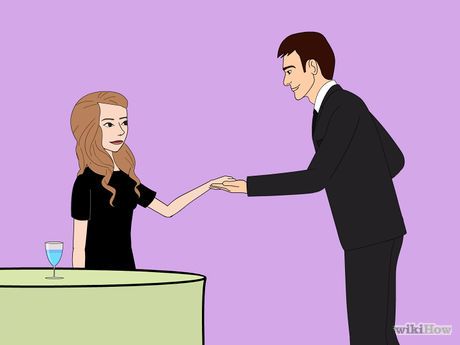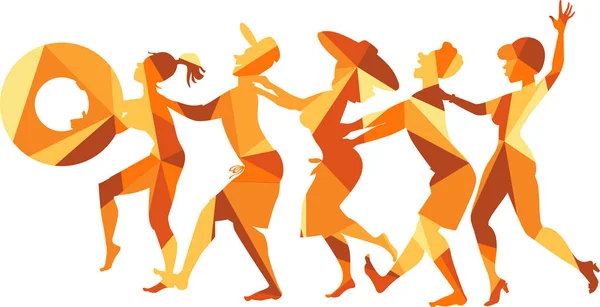How to improve footwork in dancing
7 Tips That Will Take Your Footwork To The Next Level
Footwork is ESSENTIAL when you dance!
If you’re not moving your feet, then you’re not utilizing your whole body to create a complete movement!
Keone, Bam, and Lyle can show you just how effective footwork can be – ON ITS OWN:
So how do we train our feet and legs to take our freestyle and choreography to the next level?
Or even just to move ‘em naturally so we don’t look so stiff?!
We’ve got 7 training tips that you should start doing today to take you from footwork.. to foot-werrrrk.
1. Know where your weight is
Let’s start with the basics – stabilizing your balance.
To do this, feel how your weight is distributed through each move.
For example, if you have to lift your left foot up, then most of your weight should be on your right foot.
Maintain a sturdy base the next time you dance and you’ll notice how much more controlled your bottom half is!
Play around with different positions, whether it’s on one foot or both, so you get comfortable with where your weight is and how to shift between them.
See Related Article: Want To Dance With More Control? Read THIS.
2. Stay on the balls of your feet
When we asked Carlo Darang for tips for his fast-moving pieces, here’s what he had to share.
"Always try to be light-footed and ready to move from one part of the floor to another!
If you dance on your toes and heels and not set everything your entire foot, then it’s kind of like jump-roping – you’ll be ready to jump from one place to another.
This skill is like a triple-threat for basketball players, or even your ready stance for football players… for us dancers, it’s the same thing, same idea – be in a position where it’s easy for you to go anywhere."
So when you’re dancing, don’t always be flat footed! Being on the balls of your feet will help you spring and rebound off the floor much more easily.
Watch him in action in his STEEZY Studio class!
Thanks for the tips, Carlo!
See Related Article: How To Execute Choreography Better By Utilizing Your Body With Carlo Darang
3. Take it high and low
Footwork doesn’t just involve your FEET.
You can utilize your LEGS to can take your body to different levels and make your changes look more drastic.
Bend your knees to dip it low (cue Christina Milian~) and releve to reach up high.
The more burn you feel in your thighs and calves, the more dynamic your dancing is. Just kidding.
But do incorporate high and low levels to jazz up your dancing!
4. Don’t be afraid of the floor
I’m one of those people that groan when the choreographer says “there’s a little bit of floorwork..”
But once I do it, I realize how awesome it is.
For starters, it trains your athleticism by taking your body out of its comfort zone of being upright.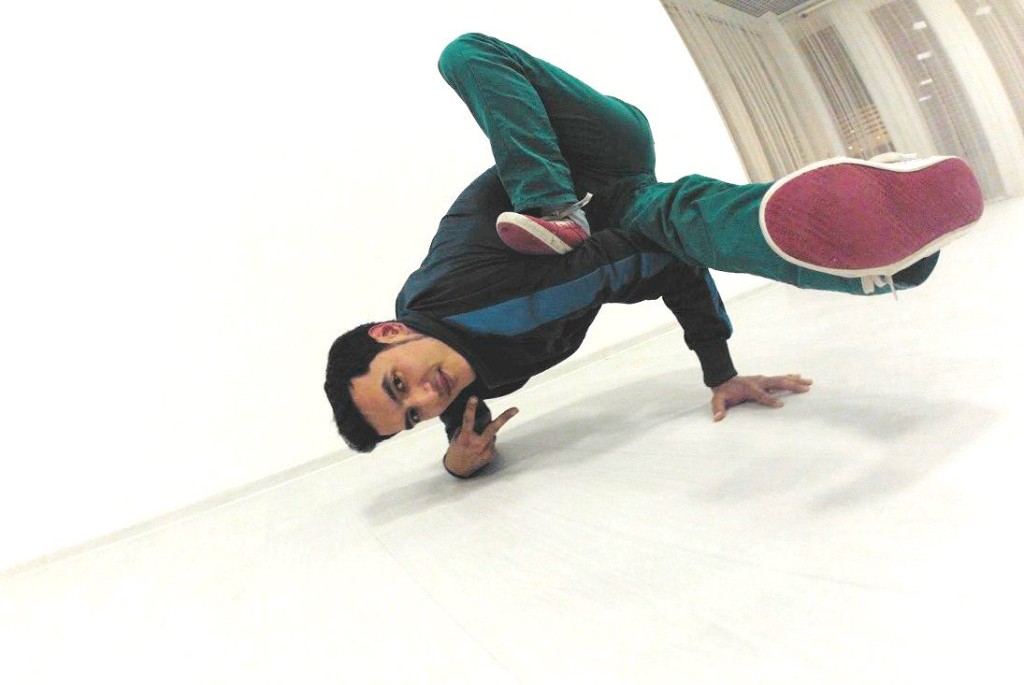
Second, it makes the piece look so much more dynamic because that whole level change to get to the floor is a chance to do something cool.
And lastly, working with the floor opens up a whole new door for creative choreography concepts!
You can use your hands to trace things on the floor, lay down flat and do some synchronized-swimming-esque leg movements, swivel around on your knees.
It’s like having a dance partner to work off of – except your partner is flat and unmoving.
For inspiration, check out how Chris Martin plays with the floor in his STEEZY Studio piece:
5. Travel!
Using your legs means that you can MOOOOVE.
Like literally. Move across the floor.
Get out of your box and use steps to travel! It’ll add another dimension to your dancing and bring the audience along with you for the ride.
When you’re choreographing, try challenging yourself for a segment to come up with a way to dance from point A to point B maybe 10 feet away.
When you freestyle and feel yourself repeating the same steps you can utilize those same steps but change them in direction to travel!
6. Drill steps
Drill steps that you find in footwork-heavy styles like House and B-boying.
A big key here is repetition.
If you do the loose leg or 6-step a zillion times, then your feet are going to become conditioned to move in those combinations without you even trying.
This will also allow you to be more creative with variations of those steps!
So when you encounter a tricky step or piece of footwork, don’t just get through it but master it so you’ll be ready for next time.
7. Polish your turns
A sloppy turn can totally ruin the flow of a piece. You don’t want to clumsily jump out of a turn!
Here are some tips to make your turns clean:
Engage your core musclesImagine a line from the ceiling to your head, to your toes, to the floor.
You want to stay in that alignment as you visualize your turn – Plie for leverage, Spot!
TURN UP your piece or freestyle with some clean ass turns!
Same as any other step, turns just take a lot of repetition to master.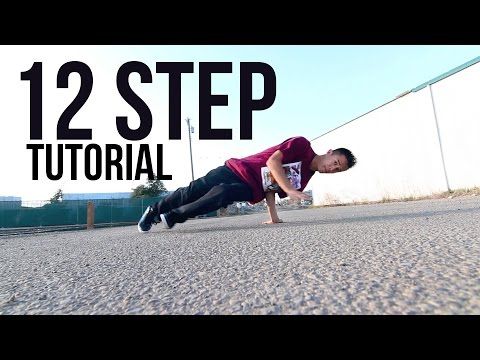
See Related Article: The Class You Need To Unlock Your Dancer Potential
Ready to get those feet moving? Comment below with something that helps you with your footwork!
We recommend Ray Basa, Julian Sena, Carlo Darang, or Paul Ross’ classes on STEEZY Studio to train for quicker, more dynamic footwork.
Happy (feet) learning!
Bachata Footwork: 9 Practical Tips for Quicker Feet
Share this article with somebody
Looking to improve your bachata footwork?
Bachata footwork might be fun and flavourful, but it can also be tough to do at speed. Fortunately, there are a few simple tricks that will allow you to dance quicker and with more control—and the best thing is, they’re easy to learn.
So, whether you want to hit all the beats in the instrumental mambo section, add stylish syncopations to your basic steps or simply keep up in your regular bachata classes, keep reading. This article will help you become a nimble-footed bachata dancer in nine steps.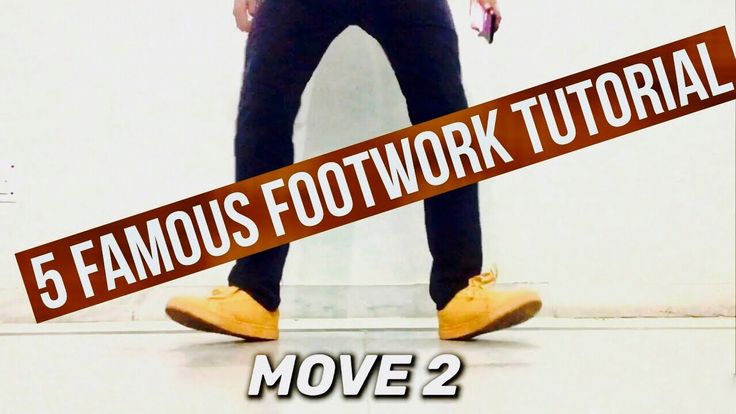 But first, let’s look at why you should polish your bachata footwork.
But first, let’s look at why you should polish your bachata footwork.
Why You Should Work on Your Bachata Footwork
It’s fun. In Spanish, bachata dancers don’t talk about footwork. Instead, they call it “a game of feet”, un juego de pies. This makes sense, because footwork is a chance to be playful and creative. Although it might seem intimidating at first, you’ll soon find yourself having fun with syncopations, slides and kicks.
You’ll develop your personal dance style. Want to look effortlessly cool while expressing your personality? Footwork will let you do that. And as you become more comfortable and confident with footwork, you’ll be able to combine it with hip, shoulder and arm movements for even greater style.
RELATED: How to Improve Your Arm Styling in Salsa & Bachata: 14 Tips
You can be more musical. You’ll be able to highlight what different instruments are doing, from the bass guitar to the güira. Bachata songs call for footwork, especially in the instrumental mambo section. And if you’re struggling to find the rhythm in traditional Dominican bachata songs, footwork classes will soon help you make sense of the different instruments.
Bachata songs call for footwork, especially in the instrumental mambo section. And if you’re struggling to find the rhythm in traditional Dominican bachata songs, footwork classes will soon help you make sense of the different instruments.
Your dancing will become more varied. Want an easy way to expand your repertoire of moves? Take the basic step, and on the second half, add a syncopation on three-and-four. Then, in the next half-basic, switch the syncopation to two-and-three. Now, syncopate on one-and-two. Next, hit all the syncopations. Now dance to the bass guitar. All you’ve done is dance the basic for 24 counts, but each time, it’s looked different. And that’s without exploring all the ways you can vary your syncopated steps through taps, kicks, flairs, cross-overs and more.
You can enjoy dancing alone. Can’t find a partner for your favourite song? Listening to bachata music at home alone? Being comfortable with footwork means you can have just as much fun dancing solo.
Your dancing will become more polished, even when you’re not doing footwork. You’ll learn to dance with more control, musicality and style—and that will bleed over into all your dancing.
Convinced? Now let’s look at how to improve your speed and control when doing bachata footwork.
1. Take Small Steps
The rise of performance dance groups has led many dancers to take up more space on the dance floor. But when it comes to footwork (and crowded dance floors), smaller is better. Although your teacher might use bigger steps so the whole class can see what they’re doing, you should use small steps to help you move quicker and with more control. The faster the song, the smaller your steps should get.
2. Rotate Your Torso
This is pure physics. If your feet are changing directions, don’t try to keep your torso still. Instead, rotate it towards the direction you want your feet to go. For example, let’s say you want to tap your right foot in front of you to the left on beat one, then to the right on beat two, and then you move it behind your (currently) stationary foot to do a triple step on beats three-and-four. So, as you start to move your foot to the left, your torso will also rotate left. As you move it to the right, your torso should rotate right. And you can use the triple step to rotate your entire body in whichever direction you need for beat five.
So, as you start to move your foot to the left, your torso will also rotate left. As you move it to the right, your torso should rotate right. And you can use the triple step to rotate your entire body in whichever direction you need for beat five.
Look at how Ataca y La Alemana rotate their torsos in this tutorial posted by videographer PhoThomas.
Here’s the same routine but at full speed. The chest rotation is slightly harder to spot because they’re moving really fast (especially from 0:22 onwards), but it’s still there—and it’s part of the reason why they’re able to dance such an impressive routine so quickly.
3. Bend Your Knees
Your dance teacher probably told you to bend your knees in your first ever bachata class.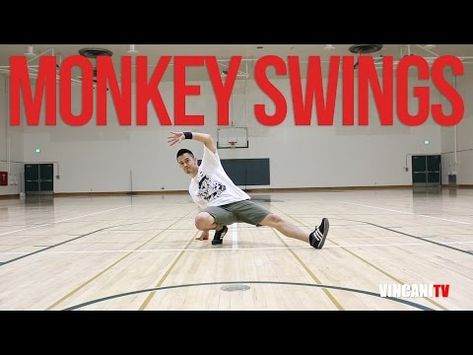 It helps you avoid locking your legs and having stiff body movement. However, it’s even more important when you’re doing quick footwork. You’ll find it increases your stability, allows you to extend your legs further without losing balance and lets you dance quicker.
It helps you avoid locking your legs and having stiff body movement. However, it’s even more important when you’re doing quick footwork. You’ll find it increases your stability, allows you to extend your legs further without losing balance and lets you dance quicker.
4. Keep Your Weight Forward
Keeping your weight forward and dancing on the balls of your feet will keep your movement nimble. In your basic steps, you might use your heels to give you extra stability or hip movement. However, when doing footwork, transferring your weight to your heels will only slow you down. Of course, there are some exceptions. You can’t do a heel kick without using your heels. Generally speaking, however, keep your weight forward and your heels off the floor unless your dance teacher tells you otherwise.
5. Dance on the Inner Pads of Your Feet
This tip is particularly useful if you’re doing a lot of fast syncoptations, such as the pico-pico step that syncopates on one-and-two-and-three-four.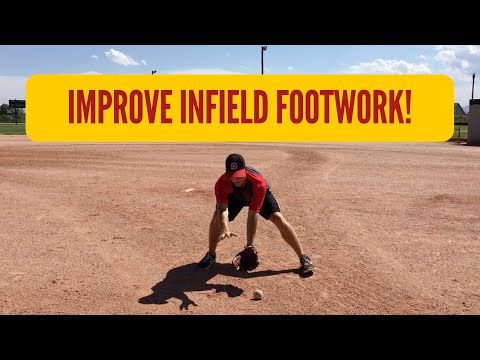 Instead of connecting to the floor with the entirety of the balls of your feet, try to just use the inner pads. You’ll find you can move much quicker and extend your feet further. After all, if your feet are 10 cm wide, dancing on the outer pads means you’re travelling almost 20 cm more than you need to.
Instead of connecting to the floor with the entirety of the balls of your feet, try to just use the inner pads. You’ll find you can move much quicker and extend your feet further. After all, if your feet are 10 cm wide, dancing on the outer pads means you’re travelling almost 20 cm more than you need to.
6. Wear Shoes You’re Comfortable In
You can do footwork in any type of dance shoe. However, if your shoes don’t fit you well or you’re struggling with the heel height, you won’t have the balance and stability required to dance quickly. Check out our guide to buying a pair of bachata or salsa shoes and knowing if they fit you correctly. You may also find you prefer practising in lower heels until you’re used to fast footwork.
7. Develop Muscle Memory for Common Footwork Patterns
We’re not being glib when we say that thinking takes time. If you’re stepping one-and-two-and-three-and-four, then you don’t have time to think about what you’re doing on each individual step. You need to memorise the footwork in chunks. Fortunately, there are several common bachata footwork patterns, so learning those will help you cut out thinking time and allow your muscle memory to take over instead. Keep going to bachata footwork classes and practising at home: it might take some time, but you’ll soon start recognising common footwork patterns.
You need to memorise the footwork in chunks. Fortunately, there are several common bachata footwork patterns, so learning those will help you cut out thinking time and allow your muscle memory to take over instead. Keep going to bachata footwork classes and practising at home: it might take some time, but you’ll soon start recognising common footwork patterns.
RELATED: How to Go From Sensual to Dominican Bachata: Some Tips
8. Learn Common Bachata Rhythms
Some footwork patterns are designed to highlight specific instruments in certain moments of the song. For example, you’re more likely to hear loud instrumental syncopation on seven-and-eight than three-and-four. The bass step is designed to highlight the most common bass guitar rhythm in the derecho section of the song, i.e. the part most likely to be played during the verse. Breaks are more likely to happen on the fourth eight-count than on the third or fifth.
As such, understanding common bachata rhythms will save you thinking time.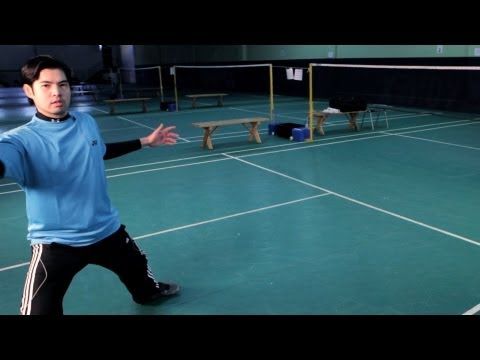 You’ll be able to better anticipate what kind of footwork will suit the rhythm. You can also stop thinking about footwork as a series of steps and instead think “dance to the bass guitar”.
You’ll be able to better anticipate what kind of footwork will suit the rhythm. You can also stop thinking about footwork as a series of steps and instead think “dance to the bass guitar”.
To familiarise yourself with bachata rhythms, try attending musicality classes and using resources like Bachata Breakdown and eMusicality. The video below comes from Bachata Breakdown, and it strips away different instruments from Joan Soriano’s bachata song Su lado de cama. It’s helpful for familiarising yourself with the individual bachata instruments and the different rhythms you can play with while dancing.
9. Think About What’s Coming Next
If you wait until you’ve already finished beat eight to think about what you want to do on beat one, you’ll struggle to syncopate on beats one-and-two in time. Every time you start a new movement, consider how it’s going to end and what will come next.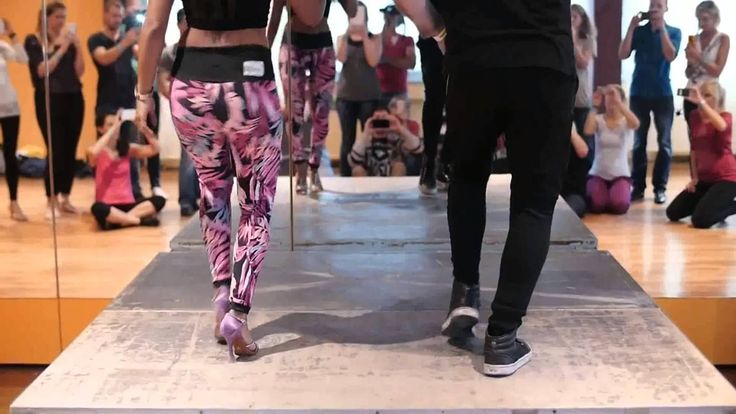 Let’s say you’re doing a syncopation on beats two-and-three, followed by two heel taps on five-and-six, seven-and-eight. As soon as you’ve committed to the two-and-three syncopation and no longer need to think about it, start thinking about the upcoming heel taps. You’ll find you can think further ahead as you develop more muscle memory for common moves, but thinking even just a beat earlier will help.
Let’s say you’re doing a syncopation on beats two-and-three, followed by two heel taps on five-and-six, seven-and-eight. As soon as you’ve committed to the two-and-three syncopation and no longer need to think about it, start thinking about the upcoming heel taps. You’ll find you can think further ahead as you develop more muscle memory for common moves, but thinking even just a beat earlier will help.
Bachata footwork is fun and a great way to develop your personal style, but there’s no denying that it takes skill and practice. Use these tips, from rotating your torso to learning the rhythms of individual bachata instruments, to help you dance quicker and with greater control.
Ella Baila
Ella Baila is the alias of a bachata teacher. She dabbles in most Afro-Latin dances and is blues-curious.
Dancer Footwork for Fighters
10 DAYS INTENSE FOOTWORK WORKOUT
Develop agile and explosive footwork for fighting. Hold your space and throw punches with more power than ever. Move with feline agility and razor-sharp speed. Dispel the stone muscles in your legs and torso. Move faster than all your rivals!
Hold your space and throw punches with more power than ever. Move with feline agility and razor-sharp speed. Dispel the stone muscles in your legs and torso. Move faster than all your rivals!
My brother Brian (champion dancer) and I share the secrets of training dancers' footwork in this unique 10-day intensive training program. 4 hours of instructional video and 26 page work journal to improve your footwork skills.
Meet OVER 100 special footwork exercises that dancers use to develop core and leg strength, improve their sense of balance, and move their feet with dazzling speed, power, and precision!
- CAT BALANCE - Hold your space with superior technique and strong leg muscles!
- FAST FOOTWORK - attack and escape with blinding speed!
- INCREASED PUNCHING POWER - Stronger muscles and improved technique increase your punching power!
Why should a fighter train like a dancer?
Dancers have the best balance and footwork of ALL ATHLETES in the world. They train 10 hours a day, working only on balance and footwork. Imagine the average ballet dancer who trained from the age of 4 to absolute perfection. By the time he is 18, he is floating in the air, spinning on one leg and makes us believe he does it easily . Hours of stretching, relentless exercise, intense footwork exercises and superhuman displays of speed and strength.
You might be shocked to learn that boxing greats such as Muhammad Ali and Sugar Ray Robinson also had dance experience. Mike Silver (boxing historian and author), in his popular book The Arc of Boxing, mentioned that the ideal body for a boxer is that of a dancer, with long, smooth, toned muscles. As a fighter, you may not want to wear tights and do 10 spins in a row, but you might want to know how the dancers trained. What techniques did the dancers use to create such a beautiful balance? How did they develop such large calves? What special footwork exercises have they been doing all these years in training?
It's no secret that classical dance training can be the hardest type of physical training in the world. The dancer's body is carved to perfection from head to toe for fluid, powerful and seemingly effortless movements.
The dancer's body is carved to perfection from head to toe for fluid, powerful and seemingly effortless movements.
Watch some videos of my former dance teachers:
- Ivan Terrazas old video of his AMAZING foot strength
- Gabriel Miss - INCREDIBLE foot speed and accuracy
- Brian Nguyen - watch my brother FREESTYLING on street
- there are many more that I have not listed ...
THE PROBLEM of conventional boxing footwork exercises
The footwork exercises you see in boxing and MMA gyms today are completely ineffective. Most of them are too simple or simply not organized in a logical order. Where are the stretching exercises? Where are the balance exercises? And finally, where are the exercises to improve the physical condition of the muscles and coordination?
All you see is shadow boxing, jump rope, ladder drills, cone drills and maybe a few running hip twist drills and that's it. Today's footwork drills are too easy, too boring, and STILL don't teach fighters how to balance and how to move their bodies. There is no systematic method for developing and complicating work in order for the body to move better.
Today's footwork drills are too easy, too boring, and STILL don't teach fighters how to balance and how to move their bodies. There is no systematic method for developing and complicating work in order for the body to move better.
Still missing from today's footwork exercises:
- Mindfulness exercises - how to develop a great sense of balance and control of the neutral axis.
- Full leg workout - not just calves and agility (no inner leg work)
- Lack of slow motion work - to increase control and coordination, instead of just raw speed and power
- Does not work effectively on the "footwork muscles"
What is the Dancer's Footwork for Fighters training program?
You will have access to a comprehensive 10-day training program with 4 hours of video. Every day you will be introduced to many new footwork techniques, exercises and drills to completely transform your lower body and improve your footwork! This is a proven training program used by dancers for generations.
You will get THICKER, STRONGER, FAST legs.
You will finally have fully developed leg muscles, thereby gaining increased leg strength, coordination and control throughout an extended range of motion. You will have access to an advanced training program to develop perfect balance and fast footwork skills. You will develop a stronger and MORE FUNCTIONAL torso in order to generate MORE POWER IN ALL BODY MOVEMENTS.
You will stand stronger, move faster and hit harder!
Access to Champion Dance Knowledge
You will have access to one of the greatest resources for footwork training through my brother, Brian Nguyen, US TANGO CHAMPION. He has trained with the best in the world and has won numerous dance competitions due to his skills and footwork abilities. He is a highly respected tango dancer all over the world. He charges over $100/hour for private lessons and always has bookings in every city he visits.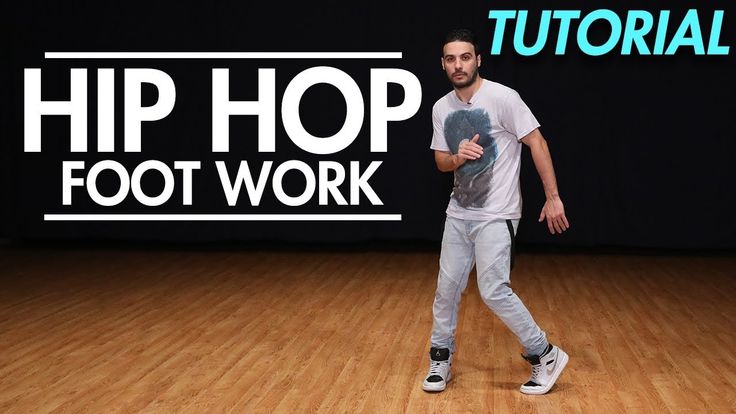
And Brian Nguyen will share his secret exercises and training methods in this specialized course. You will learn…NOT 10…NOT 20…but MORE THAN 100 FOOTWORK EXERCISES. Brian and I will begin to pull you in slowly, starting with fundamental techniques and basic exercises (Days 1, 2, 3). Then we will gradually move on to more intense exercises (Days 4, 5, 6, 7). And at the end, we will end with impossible exercises (Days 7, 8, 9, 10). You will receive technical demonstrations and theoretical explanations every day.
*** Watch my brother Brian Nguyen's performances - VIDEO 1 - VIDEO 2 ***
These specialized footwork workouts are HARD.
Working off and exercises are incredibly difficult and painful. This course is not intended for non-serious fighters. If you don't even like jumping rope, this course is not for you! I only recommend these workouts to serious athletes or people with crazy curiosity.
The average person won't even make it past DAY 5. If you're looking for a challenge and really want to take your footwork to the next level, this course will give you the best footwork in the gym!
If you're looking for a challenge and really want to take your footwork to the next level, this course will give you the best footwork in the gym!
100+ footwork exercises ranging from easy to difficult to difficult to painful to impossible. Many of you who are reading this now will NEVER be able to do them all. However, your footwork speed, accuracy and agility will improve enormously if you work on it.
If you can survive these workouts,
footwork in combat will be easy.
Fighter Dancer Footwork
BUY NOW FOR $57 USD
- 4 HOURS of videos - 240 minutes of instructional videos broken down into a 10-day workout program. Learn secret techniques and discover over 100+ specialized exercises that will improve your footwork!
- 26-PAGE Workbook - All footwork exercises, key balance tips and techniques in a helpful PDF file. Print it out, follow it and take notes.
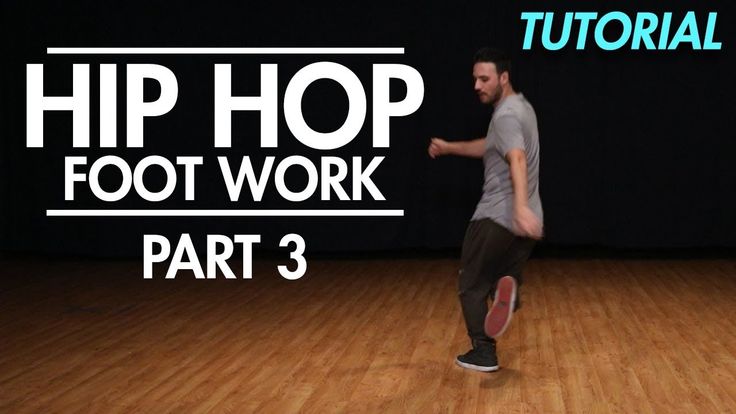
- ALL YOU NEED IS SOCKS - Ideally, it would be nice to have dance shoes and a smooth floor, but you can do many of these exercises on any surface with socks on.
- THIS IS A DIGITAL PRODUCT - nothing will be mailed to you. You will immediately receive a member login in your email after purchase. Videos can be watched on a computer, they can be converted for iPad or burned to DVD.
This is what you get...
INTRODUCTION - equipment and warm up
- summary of OPTIONAL utility equipment
- how to use the stick and elastic bandages for legwork training
- how to keep your body functional with foam roller, stretcher, foot massage ball
Day 1 - developing a sense of axis
- how to stand up straight and find your neutral axis
- how to engage the torso more using the position of the hips and legs
- using the calf muscles to grip the ground
- how to increase strength, speed and leg coordination
- torso strengthening in motion
- breathing techniques for body movements
- how to stand strong for balance
Day 2 - Axis Control Development
- Hips and Calf Warm Up
- axle offset with balance
- calf strengthening and foot coordination exercises
- keeping the torso while in the air (jumping exercises)
- how to develop "active feet"
- 2 simple tips for developing a sense of balance (during the day / when you are not training / outside the gym)
Day 3 - simple body movements and foot engagement
- slow motion footwork techniques (increases body control)
- heel engagement to improve foothold and stride strength
- use of socks to improve control, change directions and speed
- how to turn the body with control, power and relaxation
- engaging the upper body to assist the lower body
Day 4 - Leg Strengthening and Hip Stabilization
- advanced slow motion legwork technique (increases strength and balance)
- movement in geometric shapes (maintaining balance during turns)
- stay heavy on the move
- weight control (to prevent falls)
- hip stabilization during movements
Day 5 - torso and feet strengthening
- traction muscle strengthening
- how to "lift" the body up and down (without relaxing the torso)
- torso strengthening legwork exercises
- jumping coordination exercises
- engagement of the torso to move and stabilize the body
Day 6 - foot speed and explosive legwork
- advanced footwork exercises (speed, power, accuracy, core control)
- Pure Speed Exercises (Maximum Speed Footwork Exercises)
- explosive legwork exercises (speed and power)
- painful legwork exercises for the calves (working all sides of the calves)
Day 7 - leg strengthening, balance and coordination
- single leg footwork exercises (skating leg strengthening)
- single leg twists (strengthening the torso and feet)
- turns on two legs (balance and coordination)
Day 8 - core strengthening, speed and power
- advanced twist exercises (free leg control during turns)
- slow rotation exercises (increase strength and control)
- Torso Twisting Exercises (Insane Torso Strength, Speed and Power)
- Understanding how to use Torso twist
- best core exercises
Day 9 - advanced balance and coordination
- advanced core exercises
- advanced exercises with rotations
Day 10 - very VERY DIFFICULT THINGS
- IMPOSSIBLE! 😉
PS: Have questions about this footwork guide? Leave a comment below or send me an email and I'll get back to you right away.
Development of leg speed and speed at home
Hello, dear visitors of the site basketball-training.org.ua ! The idea of writing this article came to me during one of the last games. It so happened that in it I had to defend against a rather fast opponent, for whom I absolutely did not have time with my feet. The problem was this: in fast breaks I could still catch up with him, but as soon as it came to the classic defensive stance, I was passed around like a standing man! And all this at the expense of an incredibly fast, explosive first step.
That is why, as soon as I got home, I was determined to find a way to develop leg speed, given that I would have to practice at home, where I would have no more than 5 meters of free space and virtually no additional devices. Let's see what came of it.
Developing the speed of the legs of basketball players There are at least two ways to start moving faster and, most importantly, sharper: to train your legs so that they move faster on the floor, and to use “little tricks”, that is, to develop the very technique of moving in a defensive stance. Naturally, not all of us are lovers of easy ways, but often they are the most logical. So I propose to start with the “useful little things” that Rick Torbet talks about in the training video “ Better 1 on 1 Defense ". By the way, if you haven’t watched it yet, I highly recommend doing it: the 8-part personal protection video tells a lot of useful things, and even if you don’t speak English, still take an hour of your time and watch it. I promise you won't regret it.
Naturally, not all of us are lovers of easy ways, but often they are the most logical. So I propose to start with the “useful little things” that Rick Torbet talks about in the training video “ Better 1 on 1 Defense ". By the way, if you haven’t watched it yet, I highly recommend doing it: the 8-part personal protection video tells a lot of useful things, and even if you don’t speak English, still take an hour of your time and watch it. I promise you won't regret it.
Development of leg speed: little tricks
Let's start with the most important thing - the defensive stance. It is very important to learn the correct defensive stance, which can be very different from what you are used to. So, the main thing in a defensive stance is good body balance. We have already talked about the importance of balance and methods of its development on the pages of this site, in the materials of Evgeny Burin ( General physical training of basketball players: part 1 and OFP: part 2 ). Now, the key to a proper guard stance is to keep your head in line with your knees. If it is slightly behind the conditional line - you will fall back, or fall forward - if it is ahead.
Now, the key to a proper guard stance is to keep your head in line with your knees. If it is slightly behind the conditional line - you will fall back, or fall forward - if it is ahead.
The second moment - when moving to the right-left, forward-backward, you should practically not take your feet off the ground, you seem to be sliding on the parquet. This method of movement will reduce the time between repulsions from the ground, which means it will increase the speed of movement and change of direction.
The third point is the foot. It must be turned in the direction in which you are moving. Yes, it will really speed up your movement. And now let's see everything that I described above in a small video. The first part is about balance, then - about the minimum distance from the legs to the parquet, and the third - about the correct setting of the foot. I think, after such an explanation, the translation will be superfluous.
[youtube]VhWFyd97Xs8[/youtube]
Well, these little tricks will allow you to quickly move around the site, sharply changing the direction of movement.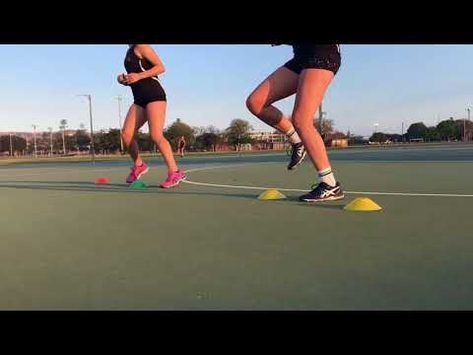 And now, let's move on to the actual development of the speed qualities of the leg muscles, and for this we will use a very interesting simulator that each of us can make from improvised means in a few minutes.
And now, let's move on to the actual development of the speed qualities of the leg muscles, and for this we will use a very interesting simulator that each of us can make from improvised means in a few minutes.
Ladder Agility Drills
Ladder agility drills – this is the name of a series of exercises with a rope ladder located on the floor, which are a great way to improve footwork speed, agility, coordination and overall speed on the court. These exercises are an integral part of many SAQ programs (Speed Agility Quickness Programs - programs for developing speed, agility and quickness) and complement a variety of training complexes in many sports.
These exercises are based on the principle “ Quality is more important than quantity ”, which means that after completing them you will not get tired and will not “breathe”, as, for example, after “ Super Shuttle ”. It is best to start these exercises at the very beginning of your workout, immediately after warming up and stretching, because the muscles must be fresh in order to provide good, quality movements.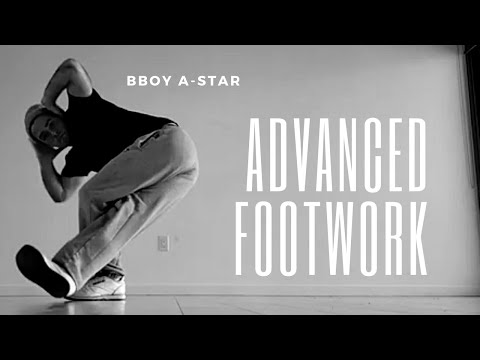 And again, after doing these exercises, your muscles will still be ready for a fairly intense workout, so don't worry: you won't overload them with these exercises! Let's move on to the exercises themselves.
And again, after doing these exercises, your muscles will still be ready for a fairly intense workout, so don't worry: you won't overload them with these exercises! Let's move on to the exercises themselves.
Exercises for the development of agility, speed and quickness of footwork
Exercise No. 1 – “classics”. This is one of the easiest agility exercises and is suitable for everyone.
- Begin the exercise in a starting position at the bottom of the stairs, feet shoulder-width apart.
- Jump forward with both feet and land on the first sector of the ladder on your left foot.
- Next, pushing off with your left foot, jump forward again, but land on two feet.
- Push off with both feet again, jump forward and land on the right foot.
- Pushing off only with the right foot, jump forward and land on two feet. This is 1 cycle. Repeat this cycle until the ladder ends.
Exercise No. 2 - "inside-out". This is another basic exercise, however, it is very effective.
2 - "inside-out". This is another basic exercise, however, it is very effective.
- Begin the exercise with your feet shoulder-width apart before starting the stairs.
- Step (don't jump, but step) into the first section of the ladder, first with your left foot and then with your right foot.
- After the right foot has entered the first section, immediately place the left foot to the left of the next section of the ladder, then the right foot to the right of the ladder.
- Again, step your left foot inside the stairs, and then also step your right foot (as if returning to the previous position).
- Repeat this movement pattern until the ladder ends.
Exercise No. 3 - "Step to the side" . This exercise will require more concentration and coordination of movements from you. Make a few trial attempts at low speed, and after that start working at full power.
- Start the exercise near the lower left corner of the stairs (we started the exercise in the center before, but now we need to move a little to the left).
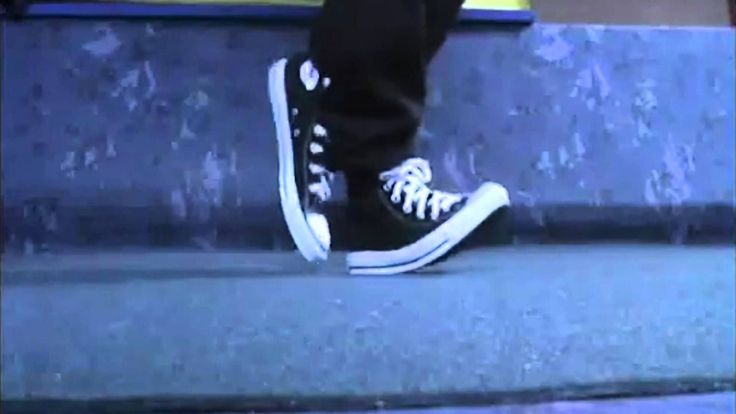
- Step onto the first section with your left foot, and without stopping immediately step there with your right (as if doing a jump, or jump stop; in the original this movement is called "1-2 motion", minimize the time between each step).
- Now you need to move to the right of the current section, again placing first the left and then the right foot.
- Now step diagonally to the left and up, again using the left and then the right foot.
- Move to the left as you exit the stairs, first with your left foot and then with your right foot. Here we are in the starting position.
- Continue in the same way to the end of the stairs. If you decide to perform this exercise several times, then each time start moving from the opposite side of the stairs, so your leading foot (in the example it is the left foot) will change regularly.
Exercise No. 4 - "Tango" . This exercise was named after a famous dance, and once you do it, you will immediately understand why.
- Start this exercise by standing at the bottom left of the ladder (as in the previous exercise).
- Step your left foot over your right foot and stand in the middle of the first section.
- Continue without stopping, place your right foot at the level of the cross bar between the first and second section, and immediately place your left foot near the right.
- This exercise is performed on the count of 1-2-3, as in a dance.
- From this position, the right foot steps over the left and stands in the center of the second section of the ladder, then the left foot…..
oh, I can no longer describe these manipulations, I'm afraid that reading them, on the contrary, you will get confused. Let's just look at the picture, everything is quite clear and without explanation. Yes, you need to repeat the exercise until the ladder ends. "Tango"
Exercise No. 5 - "Five Steps". This is the most difficult exercise of all presented here, it will require a very high level of training and innate dexterity to complete it. But if you learn to perform this exercise smoothly, without breaking down and at high speed, most of your opponents simply will not be able to keep up with your movements.
But if you learn to perform this exercise smoothly, without breaking down and at high speed, most of your opponents simply will not be able to keep up with your movements.
- Starting position - feet shoulder width apart, standing in front of the stairs in the center.
- Stand with your right foot to the right of the first section of the ladder, almost simultaneously placing your left foot on the first section of the ladder.
- The right foot moves to the left, after which the left moves to the second section (i.e. steps forward), and the right goes after it.
- Movement consists of 5 steps - this is the first phase. The second is almost similar to this one, but the movement begins in the left leg. The exercise must be repeated along the entire length of the stairs.
That's all, the article came to an end, which told about how you can develop the speed of footwork at home. As for the stairs - of course you can buy it, you can make it from improvised materials, you can stick pieces of adhesive tape on the floor - in general, it all depends on your imagination and materials at hand.





